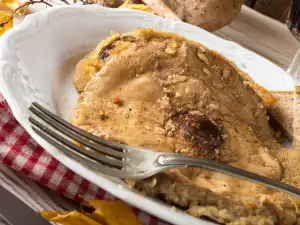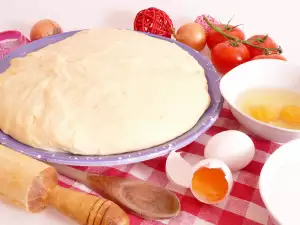Dough kneading forms gluten, which helps to evenly distribute the gases released by the yeast. This creates the necessary conditions for baking a porous and fluffy bread, in other words, a delicious yeast bread.
1. Prepare the surface on which you will knead
Wash the kitchen counter or bowl in which you will knead the dough with warm soapy water, then wipe thoroughly with a soft cloth. Mix all the previously prepared products in a bowl, sprinkle the dry surface with flour to prevent the dough from sticking during the kneading process.
2. Combining the ingredients for the dough

Use the ingredients listed in the recipe. As a rule, they are: flour, yeast, salt, sugar, eggs, water or milk. When mixing in the bowl, stir with a spoon, if possible a wooden one, but if you are not comfortable with it, use your hands.
3. Moving the dough to the work surface
Remove the dough from the bowl, directly onto the previously prepared kneading work surface. When kneading, a sticky ball should form, which means that the dough is ready to be kneaded.
4. Kneading the dough
Wash your hands before kneading the smooth dough. This process requires bare hands, so wash and dry your hands. Gather the dough into a pile, continue kneading, by adding a little of the flour and changing its shape. Press with your palms and gather with your fingers, if it seems that the dough is still sticky, sprinkle more flour on top, by mixing it into a general mass.
Press the dough with the palms of your hands, by pushing it forward slightly, this helps activate the action of the gluten. Continue to fold the dough in half and press it well forward, until the dough is slightly springy.

This process is repeated for 10 minutes, it must be rhythmic and stable (do not work slowly), the processing requires that each part of the dough is processed quickly without stopping for too long between turns, so that the dough can be completely kneaded.
5. Finish kneading
Check that the dough is holding its shape by forming it into a ball and dropping it onto the counter. If it doesn't lose its shape, it means it's firm and shiny smooth. Keep following your recipe, most of them leave the dough to rise for a while, shape the bread and let it rise again before baking.
If you follow these rules, you will naturally have soft bread, easy to chew on the inside and with a crispy crust on the outside. But if you don't knead the smooth dough very well, your bread will be hard, thick and flat.
With smooth dough, you can also prepare:
- or marmalade rolls;




















Comments